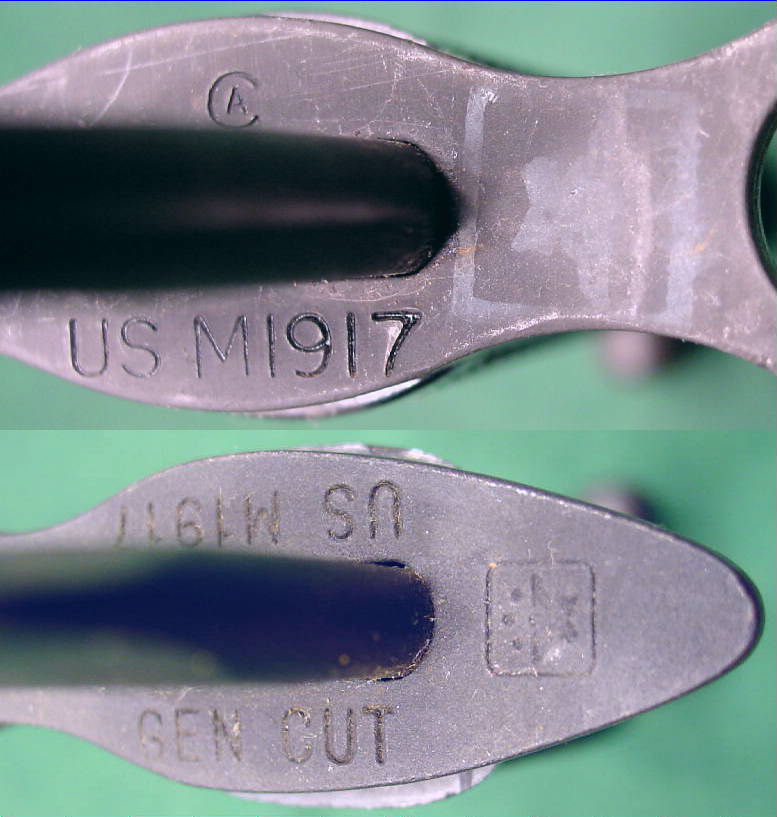
Grips are held on by brass rivets in the same fashion as the locally made 1888's Locally made versions of the 1907 were made from steel stock and hand grinding. Hilt and blade are very similar to the 84/98 but with a modified cross guard o fit the SMLE nose cap and slot.

There is some discussion that these may be Israeli contract as well Siamese replacements beiong different made and much more substanti alĪ contract for Bayonets for the Austrian SMLE's used by the Police post WWI was placed and a new made modified 84/98 style blade with a muzzle ring. Any help is much appreciated, and they are not I now have my own copy but still have no idea of where these were made Previously as supplied by a fellow co ellctor, This allowed it to stick up above the trench parapet and the morse key for the lamp kept protected below the rampart Signal lamp from WWI designed to fit on a 1907 Bayonet. Hinged clip on rear allows mirror to be attached to a bayonet or other object to get height or reach WWI Vigilant mirror, sold to act as "periscope" for troops in trenches, allowing them to see without being seen Parade tip for 1907 bayonet, designed to prevent flags snagging on the tip of mounted bayonets during parade duties Pictures show it fitted to both the 1903 and the 1907, fitting is sprung clip and the cam is set by aligning numbers (3 and 7) with matching numbers on the main section. This adjusts the height of the wire V to align with the centre of the muzzle. WWI wire breaker attachment designed to fit the 19 bayonet, by using a cam to allow for the blade width differences in the two blades. WWI Grenade cup discharger mounted between the SMLE and the bayonet it locates the grenade correctly to be launched by a purpose made round fired from the rifle Although a training version, the bayonet lug was added for bayonet training. The added "heft" was to help simulate the actual weight of the rifle. The training version is cast iron, whereas the service version is steel. A forward sight would not be necessary if the nose cap was to be fitted for/to a rifle barrel. These features alone are vastly different from service production versions and cannot be reworked or machined to transform it into a service part. The stacking swivel that is normally attached to the nose cap is attached with a screw and has an opening to permit stacking (interlocking) of 3 rifles. Service weapons have straight or inwardly curved sight protectors the outward curve) and the design stacking swivel (not a sling swivel).

The key difference is the shape of the sight protectors (i.e. The development and use of a training rifle was necessary and inevitable. With rifles destined for service overseas, weapons for training purposes were in short supply. "Muzzle ring" actually mounts on separate stud under barrel Replacement scabbard leather for 1907 bayonet, made in 1945 and never The index page has information on ordering 1907 Leather New Zealand, Norway, Siam, South Africa, Turkey, UK, Unknownįor more information, photographs and details I have compiled a CD on the P1907 specifically for collectors, covering the blades, scabbards, finishes etc. The listing below is by countryĪfghanistan, Australia, Canada, China, Egypt, Germany, India, Indonesia, Iran, Iraq, Italy,

This does not cover the later 1913, 19 bayonets which are effectively modifications of the 1907 to fit the US produced rifles. On this page I intend to outline the various 1907 pattern bayonets available to the collector, in much the same way as I have done for the AK pattern bayonets, and will use my collection and photographs from other collectors to illustrate the variations.


 0 kommentar(er)
0 kommentar(er)
